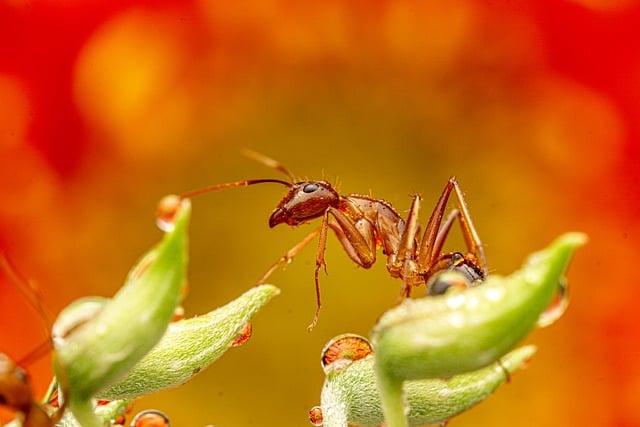Wildlife removal is a vital service in urban areas, addressing animal invasions that cause harm or disruption. It involves understanding animal behavior, ecology, and local regulations for humane relocation or control. Common encounters with squirrels, raccoons, etc., can lead to property damage and health risks. Humane methods include live traps, exclusion techniques, and habitat modification, regulated under diverse regional laws. Proactive steps like securing trash cans and proper landscape design can prevent wildlife conflicts, reducing the need for removal and fostering harmonious coexistence between humans and nature.
In many communities, wildlife removal is a sensitive yet necessary practice. This comprehensive guide explores humane wildlife removal, delving into when and why it’s crucial, ethical practices, common encounters, safe methods, legal considerations, and preventive strategies. Understanding these aspects empowers residents to navigate conflicts with nature responsibly, ensuring both animal welfare and peaceful coexistence. Discover expert insights on effective yet compassionate wildlife control, making your environment safer for both you and the wildlife.
Understanding Wildlife Removal: When and Why It's Necessary

Wildlife removal is a crucial aspect of maintaining harmony between humans and nature, especially in urban areas where natural habitats are often fragmented. It involves the careful and humane relocation or control of animals that have invaded human spaces, causing potential harm or disruption. This process is not merely about getting rid of wildlife; it’s an art that requires understanding the animal’s behavior, ecology, and local regulations.
There are various reasons why wildlife removal becomes necessary. Animals may enter residential areas seeking food, shelter, or as a result of habitat loss. While some encounters can be harmless, others might lead to property damage, health risks, or even aggressive behavior. In such cases, professional intervention is essential. Timing is critical; removing animals during their off-season or when they have dependent young can significantly reduce stress and ensure the animal’s survival.
The Humane Approach: Defining Ethical Practices

In the realm of wildlife removal, a humane approach is more than just a practice; it’s an ethical standard that respects the dignity and life of animals. This method prioritizes non-lethal techniques and ensures every effort is made to safely capture, handle, and release or rehome wildlife in need. It involves specialized training for professionals to employ tools and methods that minimize stress, pain, and potential harm to animals.
Adopting humane practices in wildlife removal fosters a harmonious relationship between humans and nature. By embracing ethical guidelines, we can address wildlife-related issues without causing unnecessary suffering. This approach not only reflects our compassion but also contributes to the preservation of diverse species, ensuring their well-being and coexistence with humans in balance.
Common Wildlife Encounters That Require Intervention

In many urban and suburban areas, homeowners often encounter wildlife visitors that can cause damage to property or pose health risks. Common wildlife encounters that require professional intervention include squirrels, raccoons, opossums, and even birds like starlings and pigeons. These animals, while part of a healthy ecosystem, can become problematic when they make their homes in human structures, causing issues such as structural damage, contamination with waste, or the potential transmission of diseases.
Raccoons, for instance, are known to carry various pathogens, and their habit of exploring trash cans can lead to unsanitary conditions. Opossums, despite being seemingly harmless, can also carry diseases and create messy situations when they die inside walls or attics. Birds like starlings and pigeons, with their strong foot grip, can cause significant damage to buildings and even pose fire hazards due to their nests. Humane wildlife removal becomes essential in managing these situations, ensuring both the safety of the animals and the well-being of the residents while maintaining a balanced ecosystem.
Effective Yet Safe Methods for Removing Animals

Effective yet safe methods for removing animals are crucial in humane wildlife removal practices. Professional services often employ live traps, which humanely capture animals without causing harm, allowing for subsequent relocation or rehabilitation. These traps are designed to ensnare creatures while minimizing stress and injury, ensuring the animal’s well-being during the removal process.
Additionally, exclusion methods prove effective in preventing future wildlife invasions. This involves sealing entry points and securing structures to deter animals from reentering. By combining these humane techniques with proper identification and understanding of local wildlife habits, efficient and safe wildlife removal becomes achievable, benefiting both residents and the natural ecosystem.
Legal and Regulatory Frameworks Governing Wildlife Control

Wildlife control, or wildlife removal, is a highly regulated field due to the delicate balance between human development and natural ecosystems. The legal and regulatory frameworks governing this industry vary significantly from region to region, reflecting local priorities and ecological contexts. In many countries, wildlife control operators must obtain specialized licenses and certifications, demonstrating their knowledge of animal behavior, safety protocols, and humane handling practices. These regulations aim to ensure that removal methods are ethical and minimize the stress and harm inflicted on wild animals.
The specific laws often dictate the permitted techniques for wildlife removal, with a strong emphasis on non-lethal solutions whenever possible. This includes measures like habitat modification, deterrents, and trapping as alternatives to killing. Moreover, there are strict guidelines on when and how certain species can be removed, especially those considered endangered or protected. Compliance with these frameworks not only upholds animal welfare standards but also safeguards the biodiversity and ecological integrity of local communities.
Preventive Measures: Mitigating Conflicts Before They Arise

Preventing wildlife conflicts is an essential aspect of humane wildlife removal. Before resorting to removal, property owners can take proactive steps to deter wildlife from entering their spaces in the first place. This includes securing trash cans with tight-fitting lids, sealing entry points and cracks around the perimeter of buildings, and removing potential food sources like bird feeders or fruit from trees during peak wildlife activity seasons. By implementing these simple preventive measures, homeowners can significantly reduce the likelihood of unwanted wildlife encounters.
Additionally, proper landscape design can play a crucial role in mitigating conflicts. Maintaining a buffer zone between structures and wild areas, using native plants that are less attractive to wildlife, and avoiding excessive landscaping features like tall fences or dense shrubs that provide hiding spots for animals can all contribute to creating an environment that is less inviting to unwanted visitors. These strategies not only promote humane treatment of wildlife but also foster a harmonious coexistence between humans and nature.
